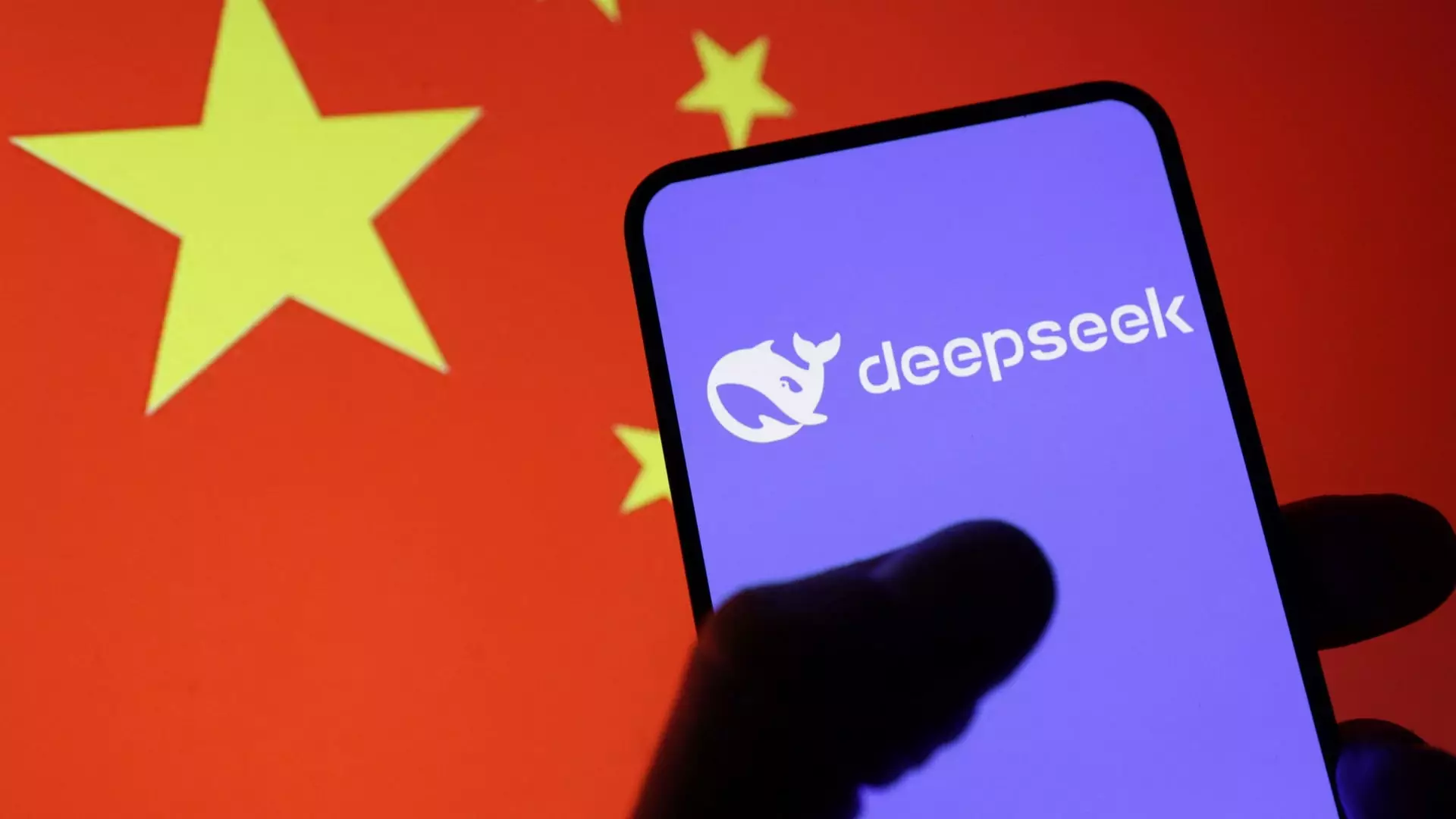In recent days, the tech world has witnessed the swift ascent of China’s emergent AI model, DeepSeek. This startup has not only captured the attention of industry titans but has also stirred a vigorous dialogue regarding innovation, competition, and the financial implications of developing cutting-edge artificial intelligence. With heavyweight executives from Microsoft, Apple, Meta, and others weighing in, it is evident that DeepSeek’s advances are not merely a technological breakthrough but a catalyst for intense strategic discussions among U.S. tech leaders and their response to global competition.
DeepSeek’s flagship AI model, the R1, is being hailed not only for its capabilities but also its development cost of approximately $6 million—a stark contrast to U.S. counterparts whose expenses run much higher. This has fundamental implications for cost efficiency in AI, an area where substantial investments have been made. The fact that the app climbed the Apple App Store charts so quickly underscores its disruptive potential. As the tech sector prepares for a new earnings cycle, DeepSeek’s entry has complicated the landscape for established players like OpenAI and others.
The responses from leaders at major tech firms have been a mix of admiration, caution, and strategic recalibration. Satya Nadella, CEO of Microsoft, emphasized that AI’s evolution revolves around cost effectiveness, suggesting that the trends sparked by DeepSeek might lead to widespread commoditization of AI technologies. The concept of “bending the curve” in efficiency is vital—indicating that innovation is not fixed but rather a moving target that requires vigilance and dexterity from industry players.
Meanwhile, Apple’s Tim Cook brought a perspective focused on the benefits of innovation that drives efficiency. However, his cautious tone indicates a degree of uncertainty regarding how DeepSeek’s advancements might affect Apple’s cost structure and margins. This illustrates a broader hesitation within U.S. tech firms to underestimate the rapid developments emerging from China, reflecting an acute awareness of the competitive landscape.
Meta’s Mark Zuckerberg echoed this sentiment with his acknowledgment that early assessments of DeepSeek’s potential may be premature. By investing an estimated $60 billion in AI infrastructure, Meta is clearly positioning itself to remain competitive, yet it recognizes the complexity of the evolving environment. The emphasis on a multifaceted approach to competition suggests a level-headed response instead of a reactive panic, urging a more nuanced understanding of the stakes.
The Political Context and Its Implications
The geopolitical dimension cannot be ignored in this equation. Following the resurgence of the Trump administration, there has been a clarion call for the U.S. to assert its dominance in AI, illustrating that this technological race is tied closely to national interests. The announcement of initiatives like project Stargate aims to marshal collective resources towards bolstering domestic AI capabilities. This highlights the urgent need for cohesive national strategies that align technological advancements with broader economic and security interests.
In discussions surrounding AI, Palantir’s CEO Alex Karp highlights the duality of technology as a force for progress and a potential threat. His insistence on an “all-country effort” underscores the sense of urgency among U.S.-based companies to unite their resources and strategies against an increasingly formidable adversary. The need for cooperation and integrative strategies is becoming more apparent as the stakes of the AI race escalate.
Market reactions following the launch of DeepSeek’s model were swift and indicative of investor anxieties around competitive positioning. The decline of shares in key chipmakers Nvidia and Broadcom showcased the immediate concern over lost market share and future profitability in light of a potentially cheaper alternative emerging from China. This volatility points to the fragility of current market structures and the disruptive potential that a new player can introduce.
Furthermore, Reid Hoffman’s perspective provides a counter-narrative, encouraging industry leaders not to succumb to defeatism over emerging competition. His assertion that the ongoing race remains an opportunity for innovation emphasizes the notion that competition can spur growth rather than stifle it. The collective momentum towards more advanced AI development might ultimately benefit consumers through enhanced services and lower costs.
A Future Defined by Competition
Overall, the rapid emergence of DeepSeek has thrown a spotlight on the dynamics of AI development and the competitive landscape between China and the United States. It serves as a wake-up call to American tech firms to reevaluate their strategies amidst heightened competition. As the industry evolves, the focus on collaboration, innovation, and strategic investments will likely determine who emerges as the leader in the AI race.
The evolution of artificial intelligence is no longer merely a technological endeavor but an intricate dance of strategy, cooperation, and competition that will shape the future of global technology for years to come. As industries navigate these turbulent waters, the imperative to adapt and innovate will be their guiding principle.

